Description
Tomato Riesentraube Cherry
Tomato Riesentraube Cherry. This wonderful old German Heirloom variety produces multiple clusters of 20-40 scarlet red one ounce sweet grapees like cherry tomatoes on large and vigorous plants with many branches. To say that this variety is productive is an understatement. This is one of the few original cherry tomato varieties that have retained the full tomato flavour that modern varieties have lost. Indeterminate, 80 days from transplant.
Cultivation Advice
- Opt for well-draining, loamy soil with a slightly acidic to neutral pH (6.0-7.0).
- Incorporate organic matter such as compost or well-rotted manure to enhance soil fertility.
- Start Riesentraube Cherry tomato seeds indoors 6-8 weeks before the last expected frost.
- Transplant seedlings into the garden after the danger of frost has passed, ensuring proper spacing (18-24 inches apart).
- Provide full sunlight exposure for Riesentraube Cherry tomatoes, ensuring they receive at least 6-8 hours of direct sunlight daily.
- Maintain consistent soil moisture throughout the growing season. Water deeply and regularly, particularly during dry spells.
- Apply a layer of organic mulch around the base of the plants to conserve soil moisture, suppress weeds, and regulate soil temperature.
- Riesentraube Cherry tomatoes may benefit from support as they produce clusters of small fruits. Stake or cage the plants to prevent sprawling.
- Use a balanced, all-purpose fertilizer at planting and during the growing season. Adjust based on plant needs and soil conditions.
- Determine if Riesentraube Cherry is a determinate or indeterminate variety. Prune indeterminate types by removing suckers to encourage better air circulation.
- Regularly inspect for common tomato pests like aphids, caterpillars, or whiteflies.
- Employ natural pest control methods or introduce beneficial insects to keep pest populations in check.
- Water at the base of the plant to minimize the risk of fungal diseases. Mulching can also help prevent soil-borne diseases.
- Harvest Riesentraube Cherry tomatoes when they reach their full color and have a firm texture. These tomatoes are typically small, round, and red.
- Pair Riesentraube Cherry tomatoes with companion plants like basil, marigolds, or nasturtiums to deter pests and enhance growth.
- Consider growing Riesentraube Cherry tomatoes in containers with good drainage, making them suitable for small spaces or balconies.
- Understand the growth habit of Riesentraube Cherry. Determinate varieties may not require as much pruning or support as indeterminate ones.
- Wait until the soil has warmed before transplanting seedlings to ensure optimal growth.
- Water the plants at the base to prevent water from splashing onto the foliage, reducing the risk of fungal diseases.
- Use a drip irrigation system or soaker hoses to deliver water directly to the root zone.
- Regularly inspect the foliage for any signs of diseases or pests. Early detection allows for prompt intervention.
- Given that Riesentraube Cherry tomatoes form clusters, provide additional support for branches laden with tomatoes to prevent breakage.
- Harvest tomatoes when they reach their mature color and have a slightly soft feel. Riesentraube Cherry tomatoes are known for their sweet and tangy flavor.
- Practice crop rotation to reduce the risk of soil-borne diseases. Avoid planting tomatoes in the same location every year.
- Install sturdy tomato cages around the plants early in the growing season to provide support as they mature.
- Implement organic pest control methods, such as releasing beneficial insects or using neem oil, to deter common tomato pests.
- In cooler climates, consider using season extension techniques like row covers to protect plants from late spring or early fall frost.
- Check if there are disease-resistant varieties of Riesentraube Cherry available. Opting for resistant varieties can contribute to overall plant health.
- In late summer, consider light pruning to improve air circulation and sunlight penetration, especially if the plant has dense foliage.
- Utilize a moisture meter to monitor soil moisture levels and adjust watering practices accordingly to prevent overwatering or underwatering.
- Experiment with natural mulching alternatives like straw or shredded leaves to maintain soil moisture and regulate temperature.
- Periodically amend the soil with organic matter to replenish nutrients and improve soil structure.
- Keep a garden journal to record observations, including plant growth, flowering patterns, and any challenges faced, for future reference and improvement.

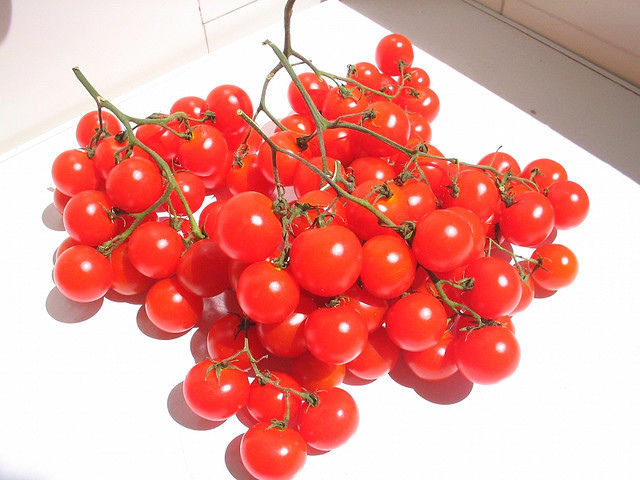
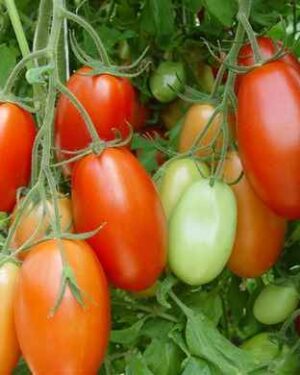
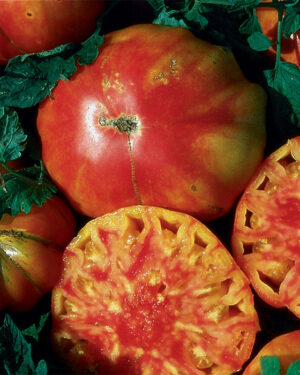

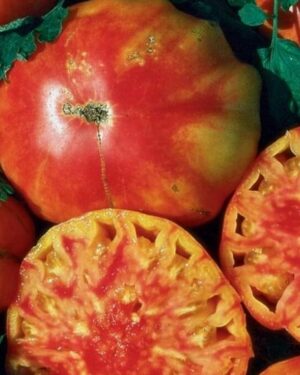


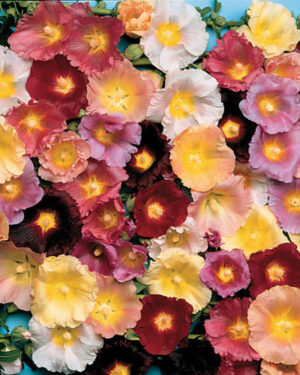
Reviews
There are no reviews yet.